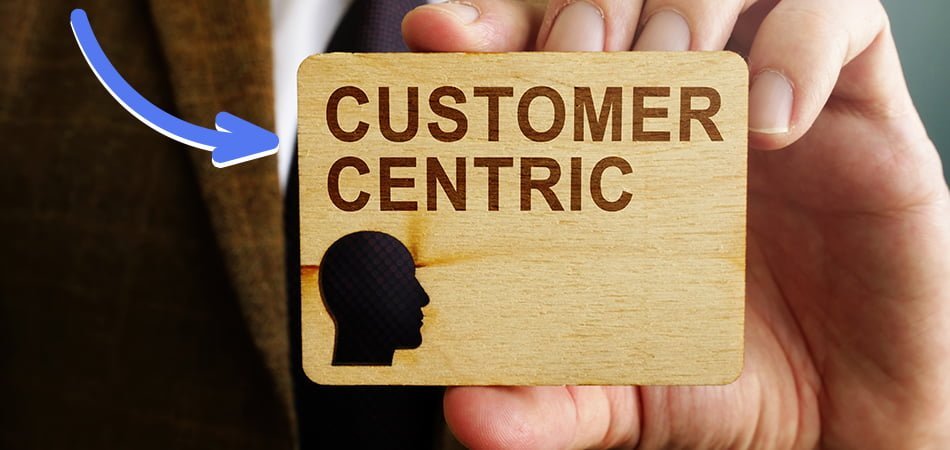In today’s highly competitive market, there is a need for businesses to go beyond offering good products or services to also placing their customers at the heart of their strategies. This is what we mean by a business being customer-centric. A customer-centric business strategy is about designing your business around the needs and wants of your customers, ensuring their satisfaction and loyalty.
Read more about Business
This approach not only helps in retaining existing customers but also attracts new ones, fostering sustainable growth. In Nigeria, where the market is diverse and dynamic, adopting a customer-centric approach can be particularly beneficial. This article will provide you with the essentials of developing a customer-centric business strategy, the benefits it offers, and practical steps Nigerian businesses can take to implement this strategy effectively.
In today’s competitive business environment, companies are realizing that putting customers at the centre of their strategy is not just a nice-to-have, but a must-have for long-term success. A customer-centric business strategy focuses on creating positive customer experiences at every stage of the customer journey. Revenue.
Understanding Customer-Centricity
Customer-centricity means prioritizing the needs and preferences of customers in every business decision. This approach involves understanding customer behaviour, anticipating their needs, delivering exceptional value consistently by creating products or services that meet those needs, and continuously improving the customer experience.
This is different from product-centric strategies, which focus on what the company can offer, customer-centric strategies focus on what the customer wants and needs.
Jeff Bezos, the founder of Amazon, is a well-known advocate of customer-centricity. He often emphasizes that being customer-obsessed is a long-term strategy. Bezos believes that businesses should listen to their customers and act on their feedback, which has been a cornerstone of Amazon’s success. The UBA Chief, Tony Elumelu, is also one other entrepreneur who emphasizes the importance of understanding customer needs. In his words, “To succeed in business, you must see things from your customers’ perspective and strive to meet their needs better than your competitors.”
Benefits of a Customer-Centric Strategy
Adopting a customer-centric approach offers several benefits for businesses including:
- Increased Customer Loyalty: When customers feel valued and understood, they are more likely to remain loyal to the brand.
- Improved Customer Satisfaction: Satisfied customers are more likely to recommend your business to others, driving positive word-of-mouth.
- Higher Revenue: Loyal and satisfied customers tend to spend more, leading to increased sales and profitability.
- Competitive Advantage: In a competitive market, a customer-centric approach can differentiate your business from competitors.
Key Elements of a Customer-Centric Strategy
There are three key elements contained in a customer-centric business strategy
-
Customer Understanding
To develop a customer-centric strategy, you need to deeply understand your customers. This involves collecting and analyzing data on customer preferences, behaviours, and feedback.
-
Employee Engagement
Employees are the frontline of any customer-centric strategy. They interact with customers daily and play a crucial role in delivering a positive customer experience. Ensuring that your employees are engaged, well-trained, and aligned with the company’s customer-centric vision is essential.
-
Customer Experience
Creating a seamless and positive customer experience is at the core of customer-centricity. This involves every touchpoint a customer has with your business, from the initial contact to the support provided post-purchase.
Steps to Develop a Customer-Centric Strategy
Having defined what we mean by a customer-centric business strategy and its elements it, we will now move on to the practical steps to implementing it in your business.
Understand Your Customers
The first step in developing a customer-centric strategy is to gain a deep understanding of your customers. This involves collecting and analyzing customer data to identify their preferences, behaviours, and pain points.
One of the ways to understand your customers is to ask your customers or prospective customers. This approach is oftentimes overlooked by businesses but it is one that not only helps you understand your customers but he’ll position your business as one that cares about the customer.
Sign up for the Connect Nigeria daily newsletter
Create Customer Personas
Customer personas are detailed profiles that represent different segments of your target audience. These personas help you tailor your marketing and service strategies to meet the specific needs of different customer groups. Each persona should include information such as age, gender, occupation, interests, and challenges.
For example, a customer persona for a Nigerian e-commerce business might be “Nkechi,” a 30-year-old professional living in Lagos who values convenience and fast delivery.
Clarify and Map Out the Customer Journey
Mapping the customer journey involves identifying all the touchpoints where customers interact with your business. This is beginning from the moment they are first aware of your business or product to the moment after they’ve purchased from you. Understanding your customer journey is important as it can help you identify opportunities to enhance the customer experience at each stage.
For instance, still using the e-commerce example we started with. If you own an e-commerce site and You notice that customers often abandon their shopping carts after adding items, you might need to double-check your checkout process to ensure they are as straightforward as possible. Also, you may need to check your payment options and maybe offer better payment options.
Personalize Customer Interactions
Personalizing customer interaction will go a long way in making customers feel valued and appreciated. Customers appreciate when businesses recognize them as individuals and tailor their interactions accordingly. This can involve personalized marketing messages, product recommendations, and customer service.
For instance, when you shop on Konga, a major e-commerce platform in Nigeria, you will notice how the site is designed to track user activity and capture customer data, using the information to personalize recommendations and marketing messages. This personalized approach helps Konga connect with customers on a deeper level, driving engagement and sales.
Empower Your Employees
The employees of a business are often the face of the business. This is because they are the ones whom the customers interact with when they want to transact with the business. This makes employees crucial in delivering a customer-centric experience.
It’s important, therefore, to train and empower your employees to understand and meet customer needs. This includes providing them with the information, skills, tools and resources they need to deliver excellent service to your customers.
Collect and Act on Customer Feedback
To ensure you’re continuously improving in your efforts towards achieving customer-centricity, you need to regularly collect feedback from your customers. This is crucial as it will help you find out whether or not you’re meeting the needs of your customers, and what you can do to improve. You can encourage your customers to share their thoughts through surveys, reviews, and direct communication. When you’ve gathered this feedback, use it to identify areas for improvement and make necessary adjustments.
Measure Your Succes
As you get to work on implementing a customer-centric business strategy, it is important that you set key performance indicators (KPIs) and that these are clear to relevant stakeholders such as your employees. Key performance indicators (KPIs) such as customer satisfaction scores, Net Promoter Score (NPS), customer retention rates, and revenue growth can provide insights into how well your strategy is working.
Having KPIs in place will ensure that your customer-centric strategy is effective, and will also give you something with which to measure the impact of your strategy.
Note:
Choosing to develop and implement a customer-centric strategy does not mean you will have a free ride in business. It comes with its challenges.
Common challenges you’ll likely face include resistance to change, lack of resources, and difficulty in aligning all departments with the customer-centric vision. While these can sometimes seem overwhelming, they are not insurmountable. Overcoming them will require strong leadership, clear communication, and a commitment to continuous improvement.
A customer-centric strategy is a journey, not a destination. It requires ongoing commitment, adaptability, and a genuine desire to put customers at the heart of everything you do.
Register to attend the CN Business Mixer
Concluding Thoughts
Developing a customer-centric business strategy is important for any business that must thrive in the present-day competitive market. Implementing a customer-centric approach successfully involves several things which have been highlighted in this post. Take note of these and get to work implementing them in your business.
Got a suggestion? Contact us: [email protected]


